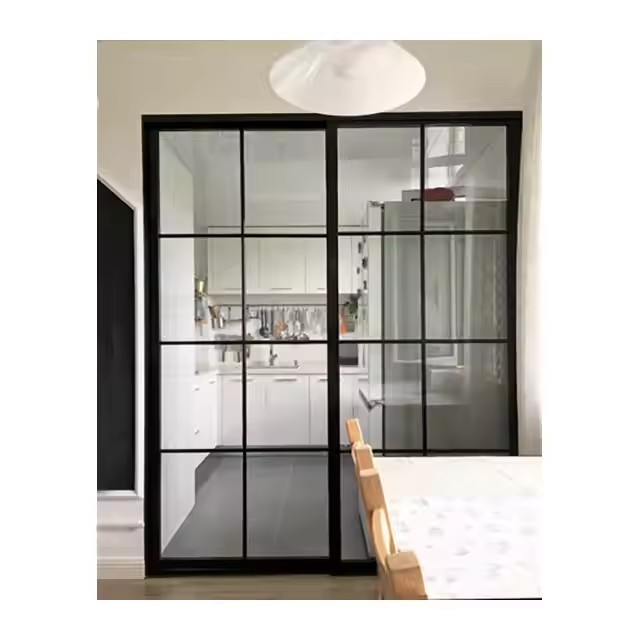I. Precisely grasp the market demands in Australia
Climate adaptation demands
Australia has a diverse climate. The northern part has a tropical climate, which is hot and humid. Consumers require doors and windows to have good moisture-proof and anti-corrosion properties, such as using corrosion-resistant aluminum alloy materials with special coating treatments. In the southern temperate regions, it is cold in winter, and consumers will pay attention to the thermal insulation performance of doors and windows. Products with triple-insulated glass filled with inert gas can be promoted. Such doors and windows are more suitable for the complex and changeable climate environment in Australia.
Architectural style adaptation demands
Modern-style buildings: Australian modern buildings mostly pursue simple lines and large-area lighting. Products like narrow-frame and panoramic floor-to-ceiling windows can be promoted, highlighting minimalist designs and extra-large viewing angles. For example, using hidden hardware can make the appearance neater and smoother. The modern style is more in line with the aesthetic tastes of the general public and various modern home decoration styles.
Traditional-style buildings: For traditional buildings such as colonial style and Victorian style, retro-shaped doors and windows can be launched, such as aluminum alloy doors and windows with wooden textures, matched with retro handles and decorative lines to meet consumers’ needs for the protection of historical buildings and the continuation of styles. Traditional architectural styles can also be equipped with modern doors and windows, creating a collision between modern and traditional elements, which is likely to bring out unexpected effects.

Regulatory and certification demands
Emphasize that products comply with strict Australian regulations and certification standards. For example, meeting the requirements of the Australian Building Code, including fire protection and safety glass standards. At the same time, products with the (Good Environmental Choice Australia) certification can have their environmental protection attributes promoted to attract Australian consumers who focus on sustainable development. It is important to emphasize that products meet strict Australian certifications because passing certifications indicates that the products meet national standards and their quality can be trusted.
II. Build an online promotion matrix
Search engine marketing
Google search ads: In addition to regular keyword placement, refine keywords according to different regions in Australia. For example, in the Perth area, keywords like “windproof doors and windows in Perth” can be used for local promotion; in Brisbane, which has more rainy seasons, keywords such as “Brisbane waterproof doors” can be used. Utilize the intelligent bidding strategy of Google Ads to dynamically adjust bids according to users’ search intentions and conversion possibilities, improving the efficiency of advertising placement.
SEO optimization: Create localized content, such as writing blog articles with themes like “How to choose doors and windows suitable for the climate in Sydney” and “Guide to purchasing energy-efficient doors and windows in Melbourne”, incorporating local popular keywords. Optimize the local business information of the website, and complete information such as the company address, phone number, and business hours on Google My Business to facilitate local users to directly obtain contact information when searching. SEO requires optimization and screening so that more customers can find the promotional content.
In-depth social media operation
Facebook: Establish an official brand page, regularly release comparison videos before and after door and window installation, product usage tutorials, and customer praise stories. Launch voting activities, such as “Which opening method of doors and windows do you like best?”, to increase user interaction. Use the precise positioning function of Facebook ads to target users based on factors such as age (mainly 25-55 years old, which is the main group for house purchase and decoration), gender, interests (such as home decoration, DIY), and location. Launch carousel ads to display the features and application scenarios of different series of doors and windows.
Instagram: Focus on visual content, release high-definition product pictures and exquisite home decoration collages, and use popular topic tags, such as #AustraliaHomeDesign and #WindowInspirationAustralia, to increase content exposure. Cooperate with micro-influencers in the Australian home furnishing field (with 10,000-100,000 followers), and invite them to shoot home renovation vlogs to show the new look of the home after installing brand doors and windows, and implant product information in the videos.

YouTube: Produce a series of video content, including product performance test videos (such as testing doors and windows in simulated strong wind and heavy rain environments), installation process recordings, and designers’ explanations of door and window design concepts. Optimize the video titles and descriptions, add keywords, and improve the ranking in YouTube search results.
Online platform cooperation
Houzz: Improve the merchant page on the Houzz platform, upload high-quality product pictures and detailed product descriptions, including dimensions, materials, price ranges, etc. Actively participate in the Q&A section of the platform, answer users’ questions about door and window selection and installation, and establish a professional image. Strive to obtain user praise and case recommendations to improve the store ranking.
Local home furnishing forums: For example, on forums like Homeone, register a brand account and share door and window knowledge as a professional, such as “How to judge the sealing performance of doors and windows”. Participate in popular topic discussions and recommend products at the right time, avoiding excessive marketing, and building a good reputation and user trust.
III. Achieve precise offline promotion
Industry exhibitions and activities
Exhibition participation strategy: Participate in important exhibitions such as DesignBUILD and The Australian Home Show. Design the exhibition booth in an open layout and set up a product experience area, allowing visitors to operate the doors and windows by themselves to feel the smoothness of opening and the sealing effect. Hold on-site lottery activities, with prizes such as door and window cleaning services or small-value product coupons to attract visitors to stay.
Hold brand activities: Hold new product launch conferences in cities like Sydney and Melbourne, and invite local architectural designers, representatives of decoration companies, and media reporters to attend. Display the features of new products at the conference, share brand concepts and R&D achievements, and expand brand influence through media reports.

